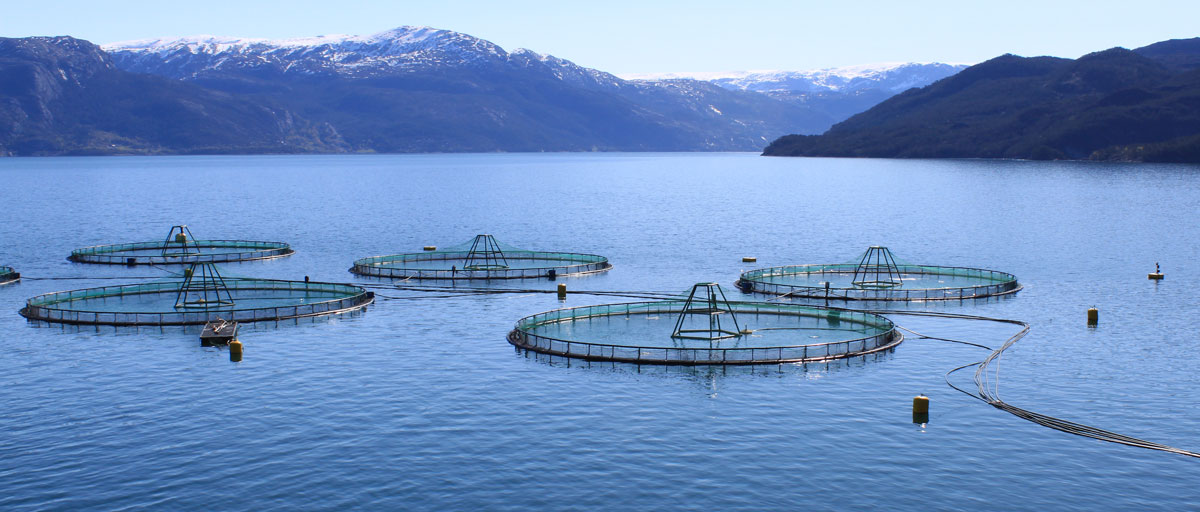the benefits and problems associated with aquaculture

Aquaculture is the farming of aquatic plants and animals. The field has grown rapidly throughout the past years because of a lack of arable land and increasing consumer demand for marine proteins and vegetables. Supply is also affected by pressure on wild populations and a growing recognition of the environmental impact of commercial fishing.
For example, it has been reported that at least 51 species and 90% of large predatory fish have been lost due to over fishing. In 2005,
- 23% of the ocean’s wild fish stocks were lightly or moderately exploited and still offer some scope for further fisheries expansion
- 52% were fully exploited
- 16% were over-exploited
- 7% were depleted
- 1% were recovering from depletion and have no room for further expansion.
Historically standard approaches like trawling and dredging to fishing also contribute to the death of 635,365 non-target marine animals [i.e. not what they were fishing for] annually.
Aquaculture offers an alternative option to unsustainable fishing in marine and limnological settings as the animals and plants are reared in a controlled or semi-controlled setting. It can also contribute to decreased pressures on natural marine life populations.
The expansion of may help also help to meet some of the growing global demand for animal products in a potentially more sustainable manner. For instance, aquaculture is a relatively efficient means to produce protein. Fish have a lower metabolic rate than terrestrial animals and in turn, require significantly fewer micronutrients to grow. Salmon, which is the most intensively cultured fish, requires 1.2 pounds of input for every 1 pound of output. In comparison, chicken is produced at a 1.9:1 ratio, pork at 5.9:1 and beef at 8.7:1.
Fish is also quite nutritious – low in fat and high in protein. Additionally, fish and seafood provides valuable minerals and vitamins, and polyunsaturated fats, particularly Eicosapentaenoic and Docosahexaenoic acids which are most easily used by the human body. The World Health Organization (WHO) recommends consuming between 48-56 grams of protein per day: a typical 3 oz. serving of the most commonly consumed fish varieties provides 15-23 grams.
To realize the benefits aquaculture, consumer demand must shift away from wild-caught varieties – something that can be difficult in an era advocating for free-range/natural everything. Shifts in consumer demand are needed because of the high fixed costs associated with aquatic farming and the highly integrated nature of the commercial fishing industry in government subsidy programs and a relatively inelastic supply of labor, as well as the use of public resources for private economic benefit. If aquaculture practices become readily accepted there is a potential to reduce imported products and increase national economic opportunities if domestic production is increased. Emerging economies can use aquaculture to integrate themselves independently into the global market.
At present, there is a lack of comprehensive guidelines to protect marine ecosystems and fisheries, albeit the marine stewardship council aims to fill this gap. A lack of guidelines is potentially danger because aquaculture systems often use public land for the operations. Scenarios of this nature often result in tragedy of the commons situations where public goods are abused and depleted when individuals seek to maximize their economic profit without considering the effect to the ‘bigger picture’.
In the United States, there have been cases were the environmental degradation was severe enough that the producers could claim economic loss and taxpayers were be required to pay for the clean-up – despite the producers being the root source of the problem.
Other ways that aquaculture can harm the environment include:
- Loss of biodiversity
- Reduced fertility of wild fish
- False reports of population improvement caused by escapes
- Increased effluence in local waters resulting in eutrophication
- Reduction of water quality
- Loss of sea mammals and fowl targeted by aquaculturists
- Depletion of pelagic fish supplies used for fish meal
- Escape of non-native and potentially invasive fish
- Loss of ecologically sensitive areas due to land conversion
- Genetic alteration of wild stock
- Transmission of disease and parasites from farmed fish to wild species.
Fish may also contain dyes, antibiotics, PCBs, dioxin, and mercury caused by polluted water and/or human inputs. The same fish that is toxic to one person may not be harmful to another. Likewise, because the various genera, families, classes, orders and phyla of seafood are consumed and produced in various ways, it becomes necessary to regulate health claims and issue warnings when necessary. Fish that are net consumers of commodity crops, many of which are GMO, have debatable health qualities which may cause the fish to be considered inedible or undesirable by many populations, both domestic and international.
As with land-based agriculture, current aquaculture practices will become unsustainable if a systems approach is not selected, or if aquaculture systems become highly input-dependent. For example, when rearing carnivorous fish, the widespread use of pelagic fish [fish that grow and mature quickly/spawn and die young] in the fish-in-fish-out system, stresses natural systems and serves to counteract the benefits of aquaculture.
While aquaculture certainly has the potential to provide a range of benefits, these benefits can only be realized by intelligent resource use supported by fair and enforceable regulations.
sources:
- Mansfield, B. (2011, March). Is Fish Health Food or Poison? Farmed Fish and the Material Production of Un/Healthy Nature. Antipode, pp. 413-434.
- Welch, A., Hoenig, R., Stieglitz, J., Benetti, D., Tacon, A., Sims, N., & O’Hanlon, B. (2010, June). From Fishing to the Sustainable Farming of Carnivorous Marine Finfish. Reviews in Fisheries, pp. 235-247.
image credit:


One Comment
Comments are closed.